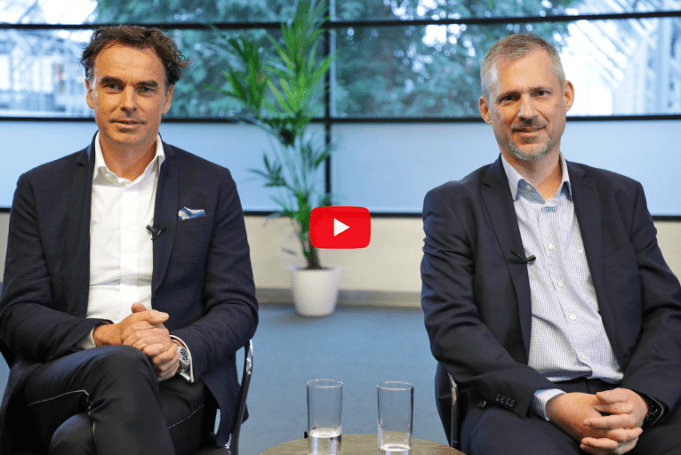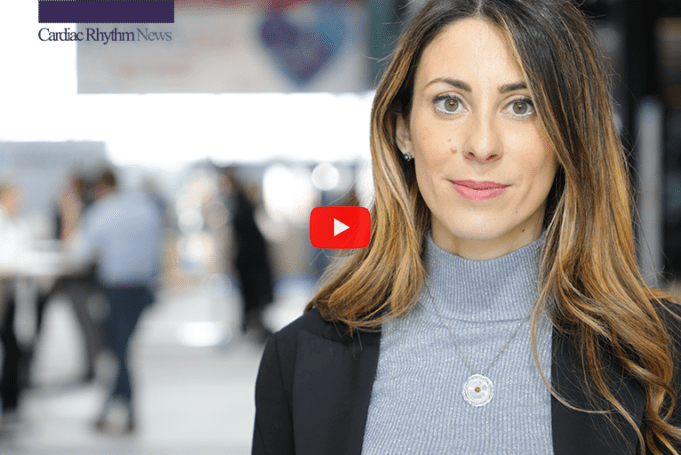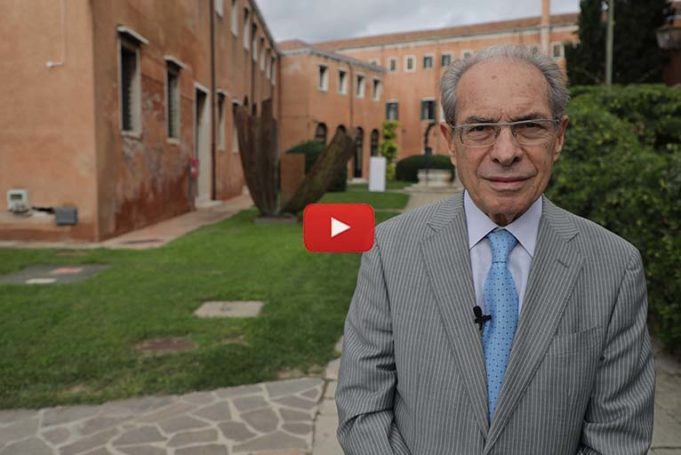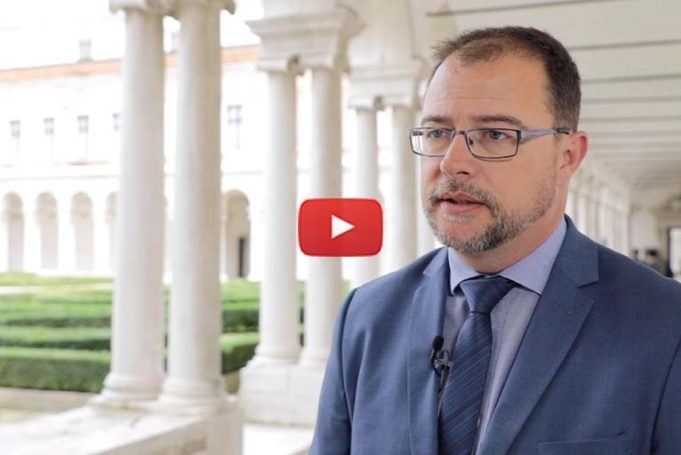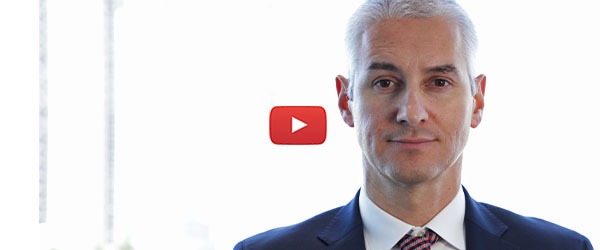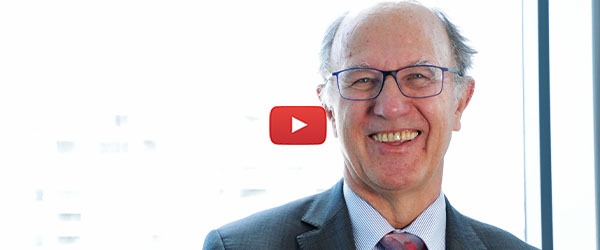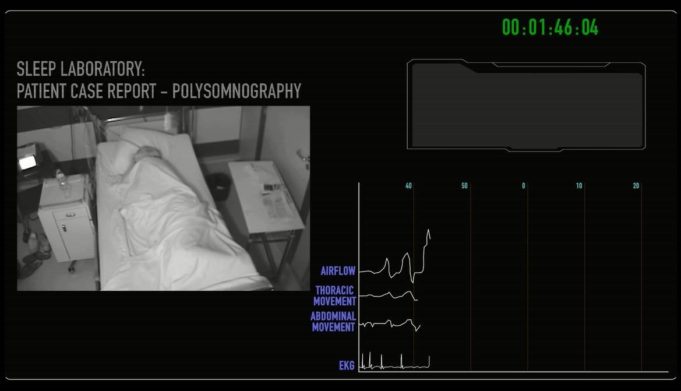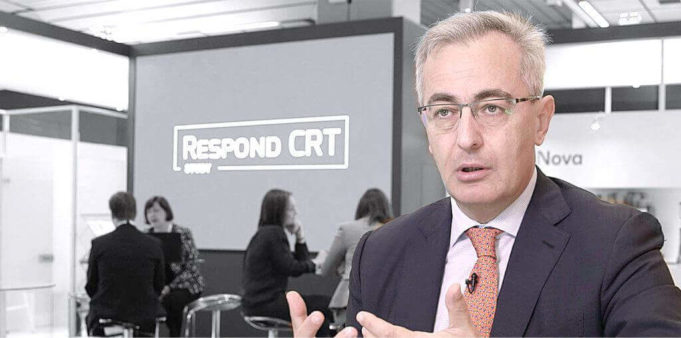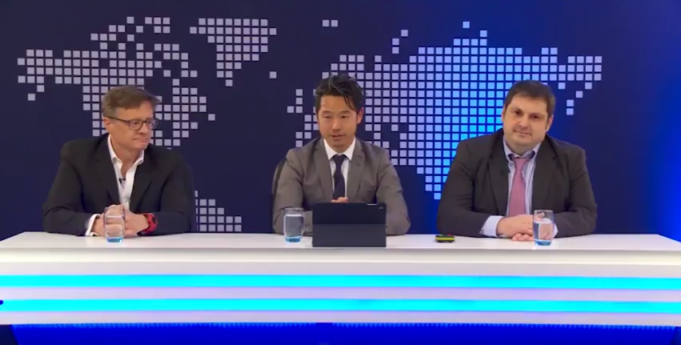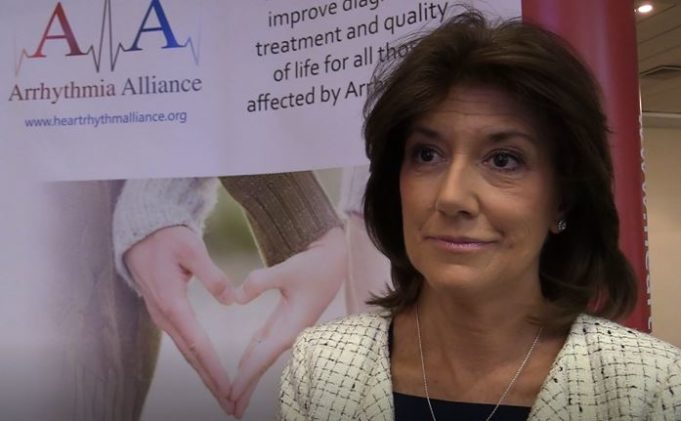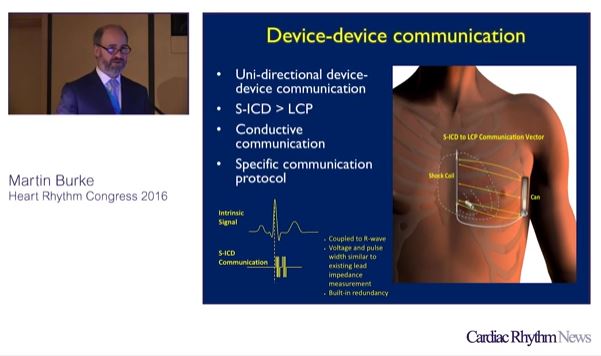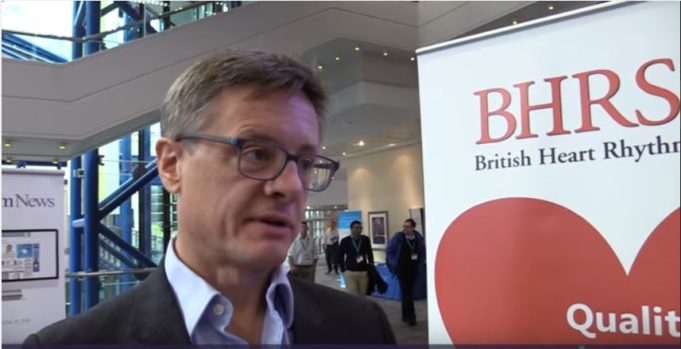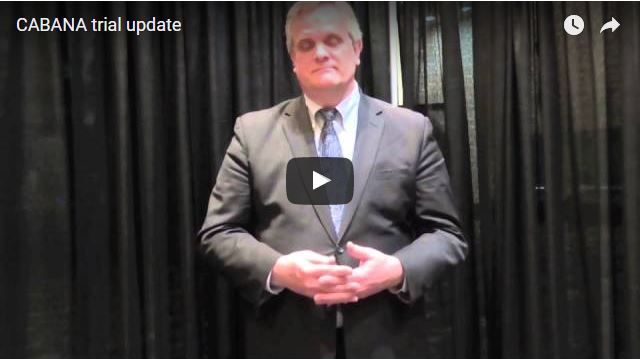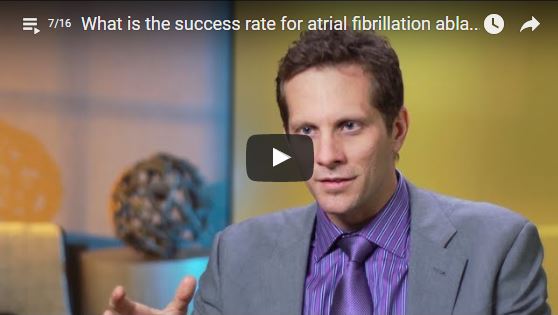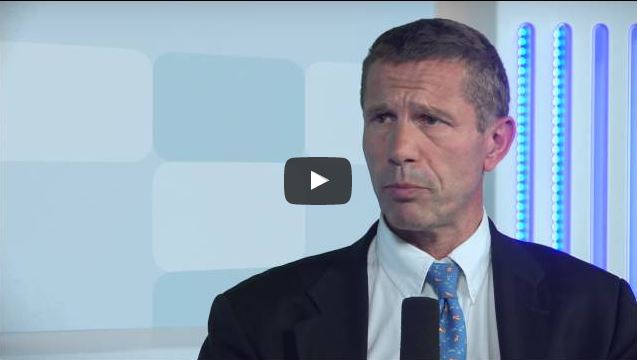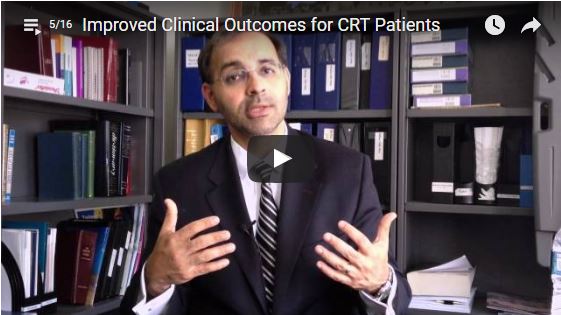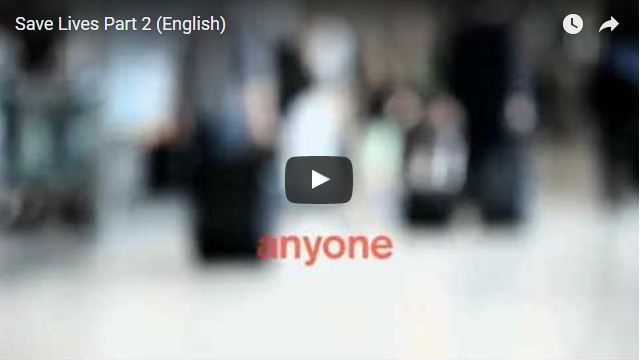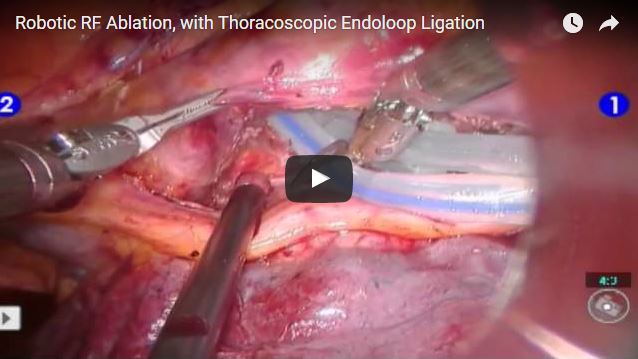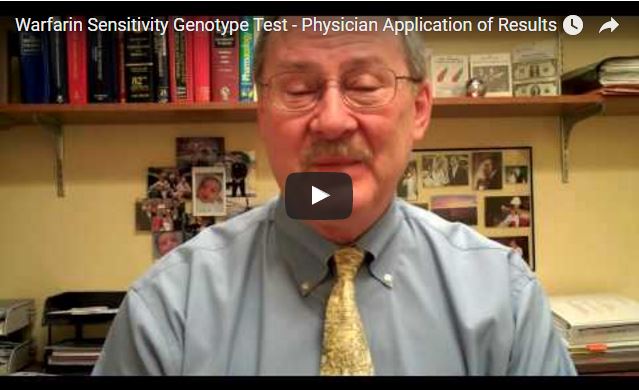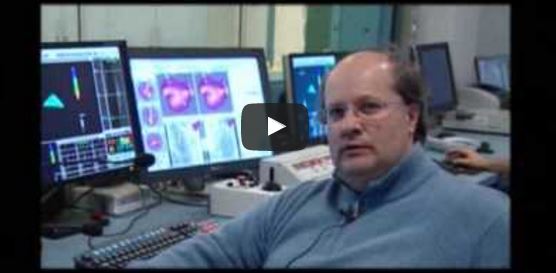Data from the PROMET and RELEASE studies provide important new insights into the safety and efficacy of rotational transvenous lead extraction (TLE), Christoph Starck (Berlin, Germany) and Peter Paul Delnoy (Zwolle, The Netherlands) tell Cardiac Rhythm News at the 2022 European...
Findings of the EAST-AFNET 4 trial, examining the benefit of early rhythm control therapy in patients with newly diagnosed atrial fibrillation (AF), should influence future guidelines for the treatment of AF patients.
This was the message of Paulus Kirchhof (Hamburg,...
The use of high-power, short duration ablation for atrial fibrillation (AF) has the potential to speed up procedural times and increase the number of ablations that can be performed in a day.
This is the message of Teresa Strisciuglio (Clinica...
The pandemic saw a boom in the use of remote technologies and telehealth for patient monitoring and management, including for patients with heart failure—and many of these technologies look to have a role in the future, even despite a...
The advent of pulsed field ablation (PFA) will revolutionise the treatment of atrial fibrillation (AF), Tom de Potter (Aalst, Belgium) tells Cardiac Rhythm News, discussing the future of the treatment of the condition.
PFA utilises a controlled electric field to...
Fred Kusumoto (Jacksonville, USA), current president of the Heart Rhythm Society (HRS), sits down with Cardiac Rhythm News to discuss the upcoming Heart Rhythm 2021 meeting which, for the first time, will be a hybrid event consisting of both...
Jens Erik Nielsen-Kudsk (Aarhus, Denmark) speaks to Cardiovascular News about a propensity score-matched study which examined left atrial appendage occlusion (LAAO) compared with novel oral anticoagulants (NOACs) in atrial fibrillation (AF) patients with a high risk of stroke and...
Jennifer Silva (St Louis, USA) talks to BLearning Cardio at SIR 2019 (Society of Interventional Radiology; 23–28 March; Austin, USA) about why physicians should move away from using Virtual Reality (VR) during procedures and move towards augmented and mixed...
Hugh Calkins (Baltimore, USA) tells BLearning Cardio at Venice Arrhythmias 2019 (3–5 October; Venice, Italy) that the 2019 HRS consensus document is extremely important because it defines a new disease and that this broad group of patients need careful evaluation and detailed management.
Electrophysiologists must read...
Antonio Raviele (Venice, Italy), the president of Venice Arrhythmias 2019 (3–5 October; Venice, Italy), talks to BLearning Cardio about some of the current challenges in atrial fibrillation (AF) management, which he notes include lifestyle modification and risk factor modification and the risk to...
A new study from New Zealand, just published in the New Zealand Medical Journal, has revealed that automated external defibrillators (AEDs) in the community are, alarmingly, not “actually that accessible”. The study found there were only three devices in Hamilton that...
Roderick Tung (Chicago, USA) talks to BLearning Cardio about the results of the His-SYNC trial which he presented at HRS 2019.
The His-SYNC trial set out to compare the effectiveness of His bundle pacing compared with biventricular pacing as first-line therapy in...
Christoph Starck (Berlin, Germany) and Saumya Sharma (Houston, USA) discuss the benefits of using rotational transvenous lead extraction (TLE) tools. Starck and Sharma note that the safety profile of the devices is “compelling” and that they are used by...
Valentina Kutyifa (Rochester, USA) discusses the late-breaking study findings looking at data from the family of MADIT (Multicenter Automatic Defibrillator) trials.
Kutyifa told Cardiac Rhythm News that the key takeaway from the analysis of the trials’ data was that cardiac...
Ante Anic (Split, Croatia) discusses the first in-human trial (CRYO-FIM) looking at a novel cryoballoon ablation system for pulmonary vein isolation at HRS 2019 (8–11 May) in San Francisco, USA.
Anic outlines how the cryoballoon ablation system works and notes...
Johannes Brachmann (Coburg, Germany) speaks to Cardiac Rhythm News at HRS 2019 about the REAFFIRM trial, which compared the use of rotor ablation versus conventional ablation when treating patients with persistent atrial fibrillation.
Brachmann outlines the key findings of the...
This video has been sponsored by LivaNova.
Sleep apnoea is a major chronic disease that can have cardiovascular consequences. Around 40–50% of people with atrial fibrillation (AF) have obstructive sleep apnoea, rising to around 60% in patients with implantable cardiac...
This video has been sponsored by Abbott.
The Confirm Rx implantable cardiac monitor (ICM) is the world’s first and only insertable cardiac monitor that combines a quick and minimally invasive procedure with Bluetooth wireless technology, allowing patients to connect using...
This video has been sponsored by LivaNova.
AF is a growing epidemic affecting 33.5 million people today.1 Up to 91% of AF patients have co-morbidities.2 Among these co-morbidities, the guidelines highlight the need to pay attention to sleep apnea.3 Like asymptomatic...
This video has been sponsored by LivaNova.
The RESPOND-CRT clinical trial is a relevant and significant study in the field of cardiac resynchronisation therapy. It has answered an important question finally, that optimisation can work, and that optimisation, if done...
This video has been sponsored by LivaNova.
Over the past two decades there have been several optimisation strategies, whether they are echo-guided or EKG-guided, aimed to improve outcomes in cardiac resynchronisation therapy (CRT) patients. However, none of them have worked...
This webinar has been sponsored by Medtronic.
Watch the recent webinar on persistent Atrial Fibrillation (AF) ablation with Prof. Schilling (St. Barts, London), Prof. de Asmundis (Brussels) and PD Dr. Chun (Frankfurt a.M.) and learn about the latest evidence, indications,...
With the aim to help tackling the limitations of detecting atrial fibrillation (AF) across the globe with a simple pulse check and to raise awareness of the importance of treating the condition at the right time and with the...
Martin Burke (CorVita Science Foundation, Chicago, USA) presents the preclinical acute and chronic performance of the combined implant of a leadless anti-tachycardia pacemaker and subcutaneous implantable cardioverter defibrillator (S-ICD). The results have shown appropriate VVI functionality, successful wireless device-device...
Dhiraj Gupta (Liverpool Heart and Chest Hospital, Liverpool, UK) discusses NHS England's commissioning through evaluation for left atrial appendage occlusion (LAAO). This programme is designed to enable a limited number of patients to receive LAAO, a procedure that is...
Cardiac Rhythm News speaks to Richard Schilling (St Bartholomews & The Royal London Hospital, London, UK), president-elect of BHRS (2017‒2019), about his objectives during his tenure, the challenges ahead in the cardiac rhythm field in the United Kingdom and...
A first-of-its-kind study has found that male veteran athletes have a significantly higher prevalence of arrhythmias such as atrial fibrillation, atrial flutter, sinus pauses, and “alarmingly” non-sustained ventricular tachycardia when compared to sedentary controls, according to research presented at...
Scientists from Johns Hopkins University and University of Bonn in Germany have found that beams of light could potentially replace electric shocks to terminate ventricular arrhythmias.
Karl-Heinz Kuck, Asklepios Klinik St Georg, Hamburg, Germany, speaks at ACC 2016 about the FIRE AND ICE trial results which have shown that cryoballoon ablation is non-inferior to radiofrequency ablation in treating patients with drug-refractory paroxysmal atrial fibrillation, with...
CardioMEMS (St Jude Medical), FDA approved in 2014, is a minimally invasive device used to measure the pulmonary artery pressures and heart rates of patients with NYHA Class III heart failure who have been hospitalised for heart failure in...
This video from the Organization for Occupational Radiation Safety in Interventional Fluoroscopy (ORSIF) tells the story of one of the world’s most prominent cardiovascular surgeons, Edward Diethrich, and the career-altering health issues he has faced as a result of chronic, low-level...
This film stars cardiologist John C Grammer, who shows his novel way of demonstrating various heart rhythms and cardiac arrhythmias.
https://youtu.be/TJR2AfxVHsM
Jared Bunch (Murray, USA) speaks, at AHA 2014, about a new study, which shows how AF patients treated with a combination of antiplatelet and anticoagulant therapy may be at an increased risk of dementia.
Video courtesy of American Heart Association.
https://youtu.be/tFTBTmQUj94
Richard Schilling (professor of Cardiology and Electrophysiology, Barts Health NHS Trust and Queen Mary University of London, UK) speaks about the use of robotic navigation and catheter force sensing technology for atrial fibrillation treatment at Barts.
https://youtu.be/-P9XmeiGXuQ
Dhanunjaya Lakkireddy, director, Center for Excellence in AF and Complex Arrhythmias, University of Kansas Medical Center, Kansas City, USA, explores the effects of yoga in atrial fibrillation patients, including whether yoga can delay the transition from paroxysmal atrial fibrillation...
John D Day, president-elect of the Heart Rhythm Society (HRS) and programme chair HRS Scientific Sessions 2014, talks to Cardiac Rhythm News about the highlights of this year’s congress including data from the SIMPLE trial, ARREST AF study and...
Richard Bernstein, professor of neurology in the Davee Department of Neurology at Northwestern University, director of the Stroke Program at Northwestern Memorial Hospital in Chicago, USA, and primary investigator of the CRYSTAL AF study, speaks at the International Stroke Conference...
Douglas Packer (Mayo Clinic, Rochester, USA) shares with Cardiac Rhythm News information on the design and rationale of the CABANA (Catheter ablation versus antiarrhythmic drug therapy for atrial fibrillation) trial, at the AF Symposium in Orlando, USA (8-11 January 2014).
According...
Darryl Wells of the Swedish Heart and Vascular Institute, Seattle, USA, talks about how safe the ablation procedure is and how important getting patients home within 24 hours of the procedure is. "Our goal is to get patients off antiarrhythmic...
Christophe Leclercq, Rennes, France, chairperson of two European Society of Cardiology (ESC) 2013 sessions in cardiac resynchronisation therapy, speaks about this year’s congress highlights on arrhythmia and device therapy and also what is expected from the ESC congress 2014...
Patrick Ellinor, director Cardiac Step Down Unit, Massachusetts General Hospital Corrigan Minehan Heart Centre (Boston, USA) discusses different treatment options to prevent stroke in patients with atrial fibrillation.
https://youtu.be/Y1s_nCG2eYU
Jagmeet Singh, director of the Cardiac Resynchronization Therapy Program at the Massachusetts General Hospital Heart Center, USA, discusses a clinical trial which compared multidisciplinary care vs. conventional care for cardiac resynchronisation therapy patients.
https://youtu.be/PFRm9QwrS7g
Richard Hongo, cardiac electrophysiologist, California Pacific Medical Center, San Francisco, USA, explains how ablation of ventricular tachycardias works.
https://youtu.be/Y-YzXbfcAas
Sudden cardiac arrest (SCA), commonly mistaken for a heart attack, is one of the leading causes of death in the United States each year, and approximately 95 percent of people who experience the condition die as a result. The...
The Sudden Cardiac Arrest Patient Education DVD is the Society’s first-ever educational DVD developed as a resource specifically for patients with SCA and part of the Society’s annual SCA awareness initiatives. The DVD uses a mix of real-world video...
Royal Philips Electronics has launched the Save Lives website (www.SaveLives.net), an online campaign to inform people about sudden cardiac arrest and to empower them to act.
https://youtu.be/EbQ0FJLuL2o
Husam Balkhy, director Center for Minimally Invasive Cardiac and Robotic Surgery, The Wisconsin Heart Hospital, USA, performs a totally endoscopic robotic RF ablation procedure using the Cobra Adhere XL (Estech) with thoracoscopic endoloop ligation of the left atrial appendage.
https://youtu.be/5YMEBORoXXE
Thomas Moyer, Mayo Clinic, Department of Laboratory Medicine and Pathology, describes the four basic categories of patients as identified through a sensitive genotype test, and how the doses of the blood-thinner warfarin would typically be adjusted to reflect differences...
Carlo Pappone, The San Raffaele Hospital, Milan, Italy, performs atrial fibrillation ablation with Stereotaxis remote magnetic navigation system and CARTO RMT non fluoroscopic mapping system.
https://youtu.be/p1BZWQW3Zmc

